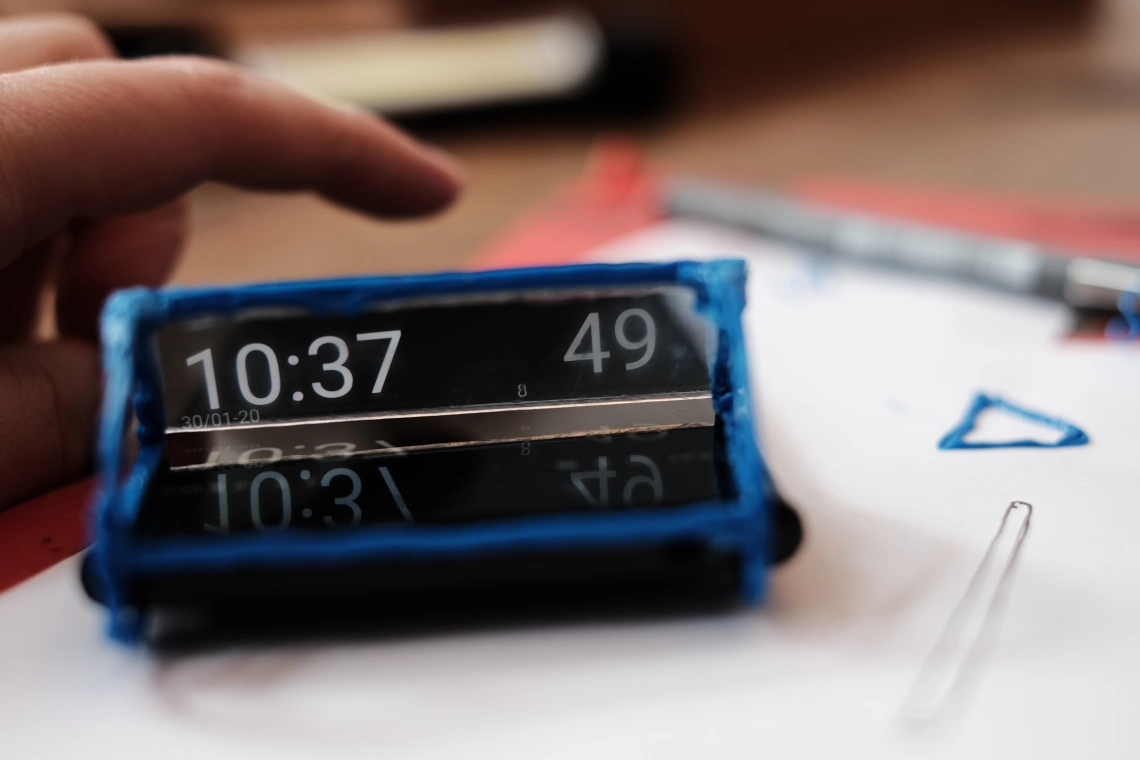Read about the background of the project here, if you want.
Electronic prototypes
My first plan was to have a stand-alone device that calculated the respiration frequency by taking the input of a button, counting the time between button presses, and outputting the equivalent “clicks-per-minute” (the same as the respiration frequency) to a small oled screen. I’d have this device in my pant pocket so the patient was not aware of it (because patients can actively change their respiration frequency if they become aware that it is being measured). It worked OK, but was quite big using 4 AA batteries and looked terrible, being held together with gaffer tape. I don’t have the original prototype anymore, and didn’t take a picture at the time.
The second electronic prototype was smaller and worked better. When I was developing it, I had started working in a ward for infectious diseases, and hygiene had become a bigger issue for me. So I decided that putting my hand in my pockets to manipulate the device while with a patient was a bad idea. I had also gotten knew ideas of interaction design from taking mediology classes. So I decided to move the device from my pant pocket to my chest pocket. I flipped the screen so it pointed up (like a old school pager) and used capacitive touch buttons on the front so it could be pushed from the outside of the uniform. This allowed it to be rather discreet and at the same time very hygienic (as I never had to touch the actual device during working hours). A video of this prototype in action:
App prototype

While working on the electronic prototype, I was annoyed with the process of updating the prototype. I had to disassemble the prototype each time I wanted to update it, and assembled it to test features, just to disassemble it again if they didn’t work. It was tedious. So I decided to make an app version of the prototype that I could use on my phone. I made a small contraption with a mirror so part of the phones screen was pointing upwards, emulating the top screen on the prototype. The rest of the screen was used as a button. The principle was the same – I could operate the whole thing without taking it out of my chest pocket. Once I made this, I found it more stable and easier to work with, so I just use this version as my go-to. The main “problem” is that I don’t think using your private phone in a work setting is good, but seeing as it stays in my pocket, I’m okay with it.


Leave a Reply